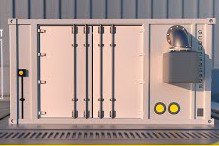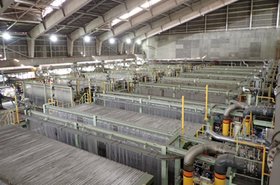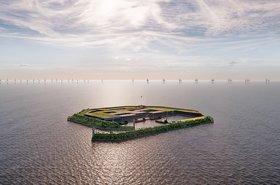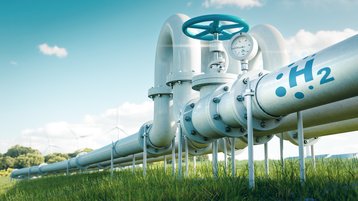Hydrogen-powered proton-exchange membrane (PEM) fuel cells are set to take off, but not before around 2027 when larger electrolyzers provide the scale required to make them more economical.
That’s according to Jogchum Bruinsma, chief commercial officer at fuel cell pioneer Nedstack. Bruinsma has been involved in fuel cell technology for more than 15 years, while the company’s backers were also behind investments in diesel rotary UPS in the past, and therefore have a track record of making sound energy technology judgments.
“We do low temperature, third generation PEM fuel cells, and what we do is we convert hydrogen and oxygen into water using membrane technology. And what is the reaction? There's electricity, there's heat. And that's it – no moving parts, and no noise,” Bruinsma told DCD’s George Rockett.
PEM fuel cells were originally devised in the 1960s by NASA to power the Gemini series of spacecraft, which carried two-person crews into low Earth orbit in missions carried out in 1965 and 1966. The high costs of material and manufacturing at the time limited the use of PEM fuel cells to well-funded programs. Over the past decade, however, interest has spiked both as a means of powering vehicles as well as providing backup for major facilities, such as data centers.
And now, Nedstack is scaling up its manufacturing output in order to meet an anticipated boom in demand. “At the moment, we have a production capacity of 10 megawatts per year, which we can quite easily expand to about 20 megawatts per year.
“But at the same time, we see that this market will start to open up in the coming years [and] we're already building a gigawatt factory. We want to be ready by 2027 when these larger electrolyzer projects are coming up, in order to be able to produce the fuel cells required because the hydrogen will be there. So we're already rapidly scaling up,” says Bruinsma.
Nedstack’s technology is already finding its way into data centers, with a 500kW implementation in North C’s Groningen facility – close to a planned hydrogen pipeline, with the Netherlands’ plan to switch from natural gas to hydrogen from around 2026 or 2027. This opens up the possibility of disconnecting the data center entirely from the power grid and running it, instead, on fuel cells with hydrogen from the converted gas network.
The heat generated by the reaction in the fuel cell, meanwhile, can be contributed to district heating schemes, suggests Bruinsma.
More...
-

NorthC to install hydrogen fuel cell backup at new Groningen data center
Netherlands provider installs Europe's first green hydrogen data center backup power
-

Honda and Mitsubishi to test data center powered by waste hydrogen, using recycled auto fuel cells
By-product hydrogen will be pumped from Tojuyama's electrolysis plant in Shunan City
-

A new land for energy and data
European countries led by Denmark have plans to connect giant offshore wind farms to new artificial “energy islands” housing hydrogen projects and data centers


